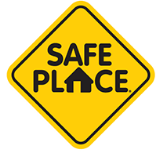Safety
Safety can be freedom from the occurrence or risk of injury,danger, or loss.
LEAD: Law Enforcement Assisted Diversion

LEAD is a pre-booking diversion program that allows officers to redirect low-level offenders engaged in drugs or prostitution activity to community-based services instead of jail and prosecution. LEAD participants begin working immediately with case managers to access services. LEAD’s goals are to reduce the harm a drug offender causes him or herself, as well as the harm that the individual is causing the surrounding community. This public safety program has the potential to reduce recidivism rates for low-level offenders and preserve expensive criminal justice system resources for more serious or violent offenders.
The National Coalition Against Domestic Violence (NCADV)

The National Coalition Against Domestic Violence (NCADV) is the voice of victims and survivors. The NCADV are the catalyst for changing society to have zero tolerance for domestic violence. They do this by affecting public policy, increasing understanding of the impact of domestic violence, and providing programs and education that drive that change. This site does not provide any direct assistance however this links to an extensive national resource list.
The National Institute of Justice

The NIJ is dedicated to improving knowledge and understanding of crime and justice issues through science. The NIJ provides objective and independent knowledge and tools to inform the decision-making of the criminal and juvenile justice communities to reduce crime and advance justice, particularly at the state and local levels.
National Organization for Youth Safety

We know that underage drinking and driving isn’t going to stop with just one person’s efforts. It’s going to take an entire community — citizens, leaders, parents, and teens working together. It’s going to take everyone facing the real issues. It’s going to take parents. It’s going to take youth leaders. It’s going to take YOU!
The National Safe Place
 Safe Place is a national youth outreach and prevention program for young people under the age of 18 (up to 21 years of age in some communities) in need of immediate help and safety. As a collaborative community prevention initiative, Safe Place designates businesses and organizations as Safe Place locations, making help readily available to youth in communities across the country. Safe Place locations include: libraries, YMCAs, fire stations, public buses, various businesses, and social service facilities.
Safe Place is a national youth outreach and prevention program for young people under the age of 18 (up to 21 years of age in some communities) in need of immediate help and safety. As a collaborative community prevention initiative, Safe Place designates businesses and organizations as Safe Place locations, making help readily available to youth in communities across the country. Safe Place locations include: libraries, YMCAs, fire stations, public buses, various businesses, and social service facilities.
SafetyLit

SafetyLit provides abstracts of reports from researchers who work in the more than 30 distinct professional disciplines relevant to preventing and researching unintentional injuries, violence, and self-harm.
Shine 365 Independent teens: 9 safety tips for going out alone

Shine365 is your source for healthy living information from Marshfield Clinic. Every day you’ll find helpful ideas and advice on a wide variety of health topics to help you and your family live well. This article is a short guide to discussing safety and unsupervised socializing with your teens.
Youth.Gov

Youth.gov is the U.S. government website that helps you create, maintain, and strengthen effective youth programs. Included are youth facts, funding information, and tools to help you assess community assets, generate maps of local and federal resources, search for evidence-based youth programs, and keep up-to-date on the latest, youth-related news. This link is an overview of healthy relationships vs. unhealthy relationships, warning signs of dating violence and background information on teen dating violence.